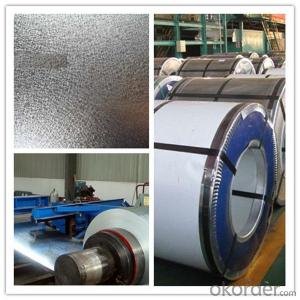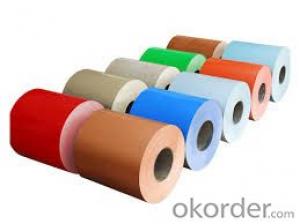Hot-dip Zinc Aluzinc Coated galvanized steel sheet coil For Metal Roofing
- Loading Port:
- China main port
- Payment Terms:
- TT or LC
- Min Order Qty:
- 25 m.t.
- Supply Capability:
- 17654 m.t./month
OKorder Service Pledge
OKorder Financial Service
You Might Also Like
Item specifice
Hot –dip aluzinc steel sheet/coil is substrated on cold rolled steel (CRC) in various strength and specification.
Coating composition is 55% aluminum in weight ratio, 43.4% zinc, and 1.5% silicon, with excellent corrosion and heat resistance performance.
The combination of zinc and aluminum in Galvalume enhances both the positive and negative effects of aluminum.
Galvalume has barrier corrosion resistance and heat resistance similar to aluminized material and good bare edge galvanic protection and forming qualities like galvanized material.
Consequently, Galvalume and Galvalume Plus will resist rust, the elements and fire while providing a sturdy and protective covering.
Standard and Grade :
Hot-dip Aluzinc steel coils | ||||
ASTM A792M-06a | EN10327-2004 | JIS G 3321:2010 | AS- 1397-2001 | |
Commercial quality | CS | DX51D+AZ | SGLCC | G1+AZ |
Structure steel | SS GRADE 230 | S220GD+AZ | SGLC400 | G250+AZ |
SS GRADE 255 | S250GD+AZ | SGLC440 | G300+AZ | |
SS GRADE 275 | S280GD+AZ | SGLC490 | G450+AZ | |
SS GRADE 340 | S320GD+AZ | SGLC570 | G450+AZ | |
SS GRADE 550 | S350GD+AZ | G500+AZ | ||
S550GD+AZ | G550+AZ | |||
Pictures of Hot-dip Aluzinc steel coils
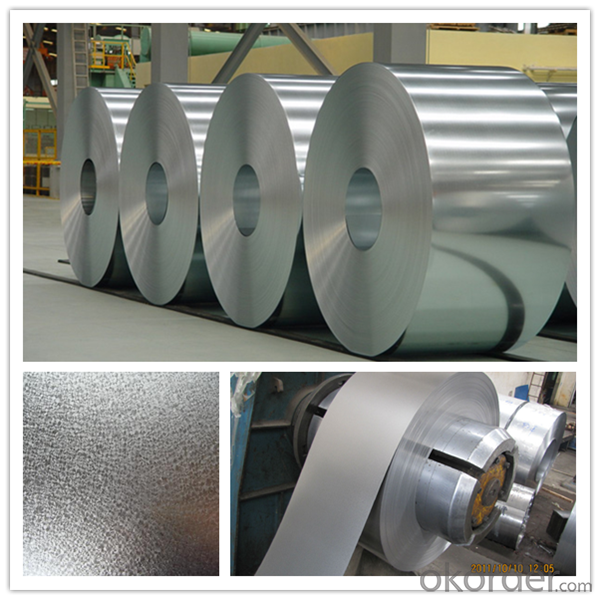
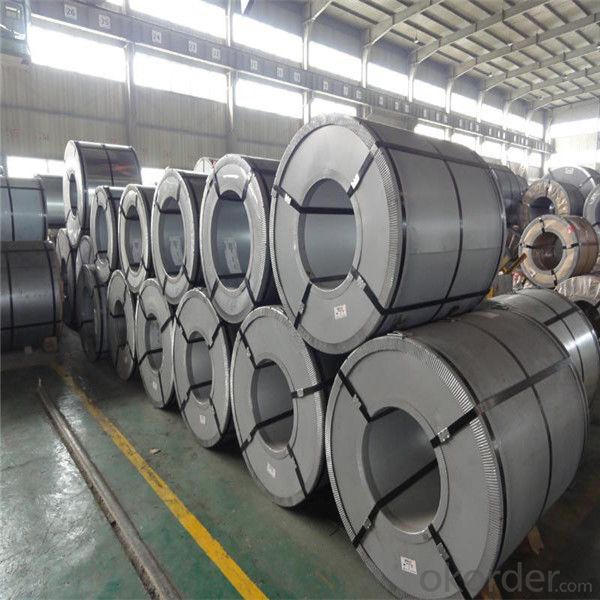
Application :
Production of cold formed corrugated sheet and profiles for roofing, cladding, decking, tiles, sandwich walls, rainwater protective systems, air conditioning duct as well as electrical appliances and engineering.
Packaging & Shipping

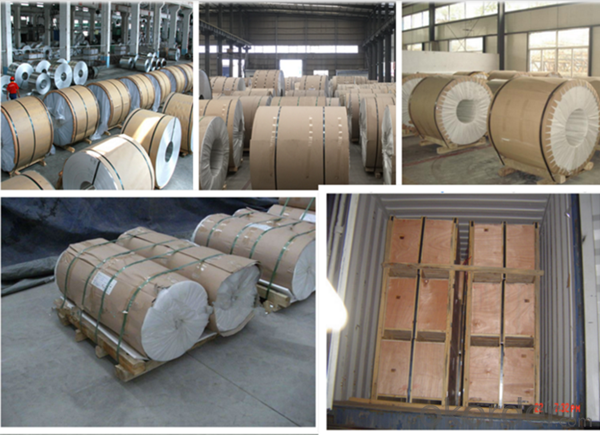
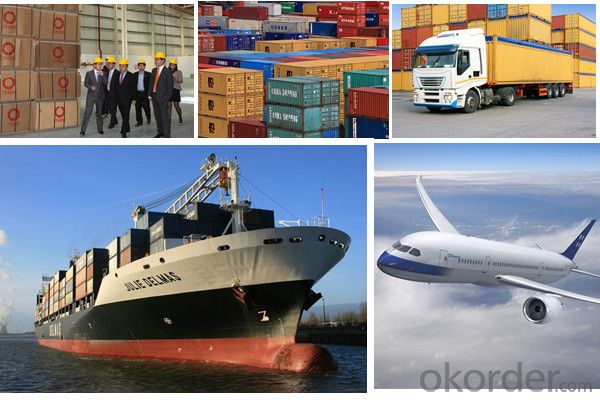
Our Advantage
* Professional Personnel of Steel Trading
* Strong Steel Industry Background
* Conveniently Geographic Location
- Q:I bought a steel pendant on eBay, but it turned out to be too shiny.I've read on a couple forums that if I leave it soaked in urine for 2 days, it will get duller.Now, if it really does get duller, will the pendant get rusty afterwards?So is the shiny surface the only thing that prevents it from rusting?Any simple, non-urine ideas on how to make it duller are welcome too.Thanks!
- Stainless steel will rust under proper conditions. I live on a boat on salt water, trust me. If the urine works it won't be prone to rusting any more than before. It's not the shine that inhibits rusting with stainless steel, it the % of carbon in the steel, compared to regular steel. IF the urine works it's because it is acidic (a mild acid). Wash it with a small brush and some baking soda to neutralize the acid when your done. A much stronger acid would be swimming pool acid. (Muriatic acid) but be careful you might test a spot with a Q tip on the back. If you try Muriatic acid it would take seconds.Then wash in baking soda water to remove all acid.. SS
- Q:Can steel coils be reused?
- Yes, steel coils can be reused. They are often recycled and used in various industries such as automotive, construction, and manufacturing. The coils can be melted down and reshaped into new products, reducing the need for new raw materials and promoting sustainability.
- Q:What are the dimensions of steel coils used in shipbuilding?
- The dimensions of steel coils used in shipbuilding can vary depending on the specific requirements of the ship and its construction. However, commonly used dimensions for steel coils in shipbuilding range from 1.5mm to 25mm in thickness and 600mm to 2000mm in width. The length of the steel coils can also vary, typically ranging from 1000mm to 6000mm. These dimensions are chosen to ensure the strength and durability of the ship's structure, while also considering factors such as weight, flexibility, and ease of handling during the construction process.
- Q:What are the common tests performed on steel coils for quality assurance?
- The common tests performed on steel coils for quality assurance include visual inspection, dimensional analysis, tensile strength testing, hardness testing, and surface quality assessment.
- Q:What are the different methods of embossing steel coils?
- There are numerous techniques for embossing steel coils, each possessing unique characteristics and applications. Some of the most prevalent techniques include: 1. Hot embossing: By heating the steel coil to a high temperature and pressing it between two engraved rollers, this method allows for intricate designs or textures to be imprinted onto the surface. The heat softens the steel, facilitating the desired pattern transfer. 2. Cold embossing: In contrast to hot embossing, cold embossing does not require heating the steel coil. Instead, it employs pressure and specifically designed dies or stamps to produce the desired pattern. Cold embossing is commonly used for simpler designs or when working with heat-sensitive materials. 3. Roller embossing: This technique involves using a series of rollers with engraved patterns to imprint the design onto the steel coil. The coil is passed through the rollers, and the applied pressure transfers the pattern onto the surface. Roller embossing is often utilized for larger-scale production, delivering consistent and uniform results. 4. Laser embossing: A modern method that employs laser technology to create patterns on steel coils. The laser beam selectively melts or vaporizes the metal, generating the desired design. Laser embossing offers high precision and flexibility, making it suitable for intricate and detailed patterns. 5. Press embossing: This technique utilizes a press machine equipped with custom-made dies to imprint the desired pattern onto the steel coil. The coil is positioned between the dies, and the press machine applies pressure, transferring the pattern onto the surface. Press embossing is commonly used for large-scale production, achieving high-speed and high-volume embossing. Ultimately, the choice of embossing method depends on various factors, including design complexity, production volume, material properties, and cost considerations. Each technique possesses advantages and limitations, necessitating careful selection by manufacturers based on their specific requirements.
- Q:How are steel coils used in the production of metal fencing?
- Steel coils are used in the production of metal fencing by being unrolled, cut, and shaped into various fencing components such as posts, rails, and pickets. These coils provide a consistent and high-quality source of steel, ensuring durability and strength in the final fencing product.
- Q:For the purpose of blade crafting. I need to heat treat this low quality steel i got.It's ASTM A36Is heat treatable and temperable?
- A36 is plain carbon structural steel. A36 could almost be considered junk steel. It is not suitable for cutting tools in any respect, as it is far to soft to hold an edge. A36 generally cannot be heat-treated, A36 can only be strengthened by cold-working, and even then, only up to about 60,000 psi. Heating the steel will only make it softer. The only real virtue of A36 is that it's easy to work with, it's easily cut and machined and it is very easy to weld. This is good for making steel structure, but not for knives. Probably the most popular material for knife blades is type 440C stainless. 440C is easy to work with in the un-treated state, and the heat treatment procedure is relatively simple.
- Q:What are the common handling defects in steel coils?
- During the transportation and storage of steel coils, various handling defects can arise, impacting the coils' quality and integrity and potentially leading to future problems. Some of the most frequently encountered handling defects in steel coils are as follows: 1. Damage to the edges: This defect occurs when the coil's edges are bumped or scraped, resulting in dents, scratches, or tears. Such damage weakens the coil's structural integrity, making it more susceptible to further harm. 2. Core damage: The core of a steel coil plays a crucial role in maintaining its shape and stability. However, mishandling can crush or deform the core, leading to coil collapse or distortion. 3. Coil slippage: Inadequate strapping or stacking of coils can cause them to shift or slide during transportation. This can result in coil slippage, causing misalignment, damage to the outer layers, or even complete coil failure. 4. Abrasion: Steel coils can experience abrasion if they come into contact with rough surfaces or other objects during handling. This can lead to the wearing off of the coil's protective coating or paint, exposing the steel to potential corrosion. 5. Moisture damage: Steel coils are susceptible to moisture damage, particularly if they are not properly sealed or protected. Exposure to moisture can lead to rust formation, compromising the coil's structural integrity and overall quality. 6. Overloading: Exceeding weight limits and improper stacking of steel coils in trucks or storage areas can exert excessive pressure and stress on the coils, resulting in deformation, bending, or even coil collapse. Adhering to weight limits and proper stacking procedures is crucial to prevent overloading. 7. Improper lifting: When lifting steel coils, it is important to use suitable lifting equipment and techniques. Failure to do so can cause coil damage, such as distortion or bending, and can also pose risks of injury to workers. To mitigate these handling defects, it is vital to adhere to proper handling and storage procedures for steel coils. This includes using appropriate lifting equipment, securing coils during transportation, avoiding overloading, and ensuring adequate protection against moisture and abrasion. Regular inspections and maintenance are also important for identifying and addressing any potential defects or issues before they worsen.
- Q:What is the maximum width of a steel coil?
- The maximum width of a steel coil can vary depending on the specific manufacturing capabilities and equipment being used. However, in general, steel coils can have widths ranging from a few inches to several feet.
- Q:What are the common challenges in steel coil manufacturing?
- There are several common challenges in steel coil manufacturing that manufacturers often face. One of the major challenges is maintaining consistent quality throughout the manufacturing process. Steel coils need to meet specific specifications and standards, and any deviation from these can lead to product defects or rejections. This requires careful monitoring and quality control measures at each stage of the manufacturing process. Another challenge is ensuring efficient production and minimizing downtime. Steel coil manufacturing involves several complex processes, including cutting, forming, welding, and finishing. Any issues or delays in these processes can result in production bottlenecks, which can impact the overall efficiency and productivity of the manufacturing facility. Additionally, handling and storage of steel coils can pose challenges. Steel coils are heavy and can be difficult to handle, requiring specialized equipment and proper training for workers. Moreover, proper storage conditions need to be maintained to prevent damage from moisture, corrosion, or other environmental factors. Maintaining a safe working environment is also a challenge in steel coil manufacturing. The equipment and machinery used in the manufacturing process can be hazardous if not operated and maintained properly. Ensuring the safety of workers and implementing appropriate safety protocols is crucial to prevent accidents and injuries. Lastly, fluctuating raw material costs and market demands can present challenges for steel coil manufacturers. The cost of raw materials, such as iron ore and scrap metal, can significantly impact the profitability of the manufacturing process. Additionally, market demands for specific types of steel coils may change, requiring manufacturers to adapt and adjust their production accordingly. In conclusion, common challenges in steel coil manufacturing include maintaining consistent quality, achieving efficient production, handling and storage issues, ensuring a safe working environment, and dealing with fluctuating raw material costs and market demands. Overcoming these challenges requires careful planning, continuous improvement, and effective management of resources and processes.
1. Manufacturer Overview |
|
|---|---|
| Location | |
| Year Established | |
| Annual Output Value | |
| Main Markets | |
| Company Certifications | |
2. Manufacturer Certificates |
|
|---|---|
| a) Certification Name | |
| Range | |
| Reference | |
| Validity Period | |
3. Manufacturer Capability |
|
|---|---|
| a)Trade Capacity | |
| Nearest Port | |
| Export Percentage | |
| No.of Employees in Trade Department | |
| Language Spoken: | |
| b)Factory Information | |
| Factory Size: | |
| No. of Production Lines | |
| Contract Manufacturing | |
| Product Price Range | |
Send your message to us
Hot-dip Zinc Aluzinc Coated galvanized steel sheet coil For Metal Roofing
- Loading Port:
- China main port
- Payment Terms:
- TT or LC
- Min Order Qty:
- 25 m.t.
- Supply Capability:
- 17654 m.t./month
OKorder Service Pledge
OKorder Financial Service
Similar products
New products
Hot products
Hot Searches
Related keywords
